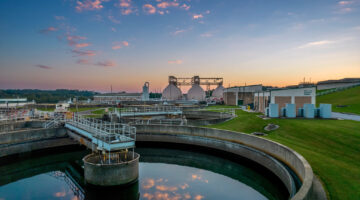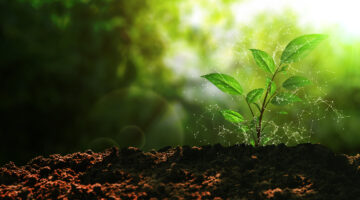Water is one of the most important resources on our planet. As industries grow and technology advances, we are placing greater stress on our water resources through increasing demand and the creation of wastewaters that are difficult to treat due to high total dissolved solids (TDS) concentrations. Because high TDS wastewater cannot be discharged into local freshwater sources — as treated municipal wastewater can — advanced water management practices like Zero Liquid Discharge (ZLD) and Minimal Liquid Discharge (MLD) are becoming more popular. These methods help reduce wastewater and protect water supplies.
What is ZLD?
ZLD systems are designed so that no treated wastewater is discharged from the site. All the wastewater is reused or evaporated through mechanical or atmospheric systems, with the general goal of reusing as much of the treated wastewater as possible. The tradeoffs for ZLD systems are typically expansive and high-tech evaporation systems that use significant amounts of energy, or large areas of land required for natural evaporation ponds. Either solution is usually very expensive and comes with operational complexities and challenges.
What is MLD?
MLD is somewhat of a misnomer; it focuses on limiting the amount of water that reaches the ZLD system by enhancing water recovery through advanced treatment techniques, which in turn reduces the scale of the ZLD system.
How Do These Systems Work?
At the heart of both ZLD and MLD is Reverse Osmosis (RO). This process filters out impurities, leaving behind clean water (called “permeate”) and leftover waste (called “concentrate” or “brine”). RO is used in multiple different configurations with various pretreatment strategies to effectively maximize the system recovery (MLD), so the concentrated brine waste can be sent to the ZLD system.
The pretreatment systems are often a series and include unit operations such as:
- Biological treatment: to remove organics and ammonia
- Softening: to remove hardness and potentially silica
- Ion exchange: further polishing for small amounts of hardness or ammonia, as well as first-pass treatment for some other contaminants such as copper removal
RO Configurations
Multiple different RO configurations exist with the goal of improving recovery (MLD). Different configurations examples include, but are not limited to:
- Crossflow RO
- Osmotically assisted RO or low salt rejection RO
- Batch and semi batch RO
- High pH RO
- Ultra-high-pressure RO
All of these systems have their pros and cons, which vary depending on the source water quality and the specific application and must be evaluated on a case-by-case basis.
MLD and ZLD Treatment Systems in Other Applications
Other applications for MLD and ZLD systems include treating water to high standards but discharging the clean water and using the MLD and ZLD brine management techniques to handle the residual. An example of this is when a high-tech facility such as a semiconductor manufacturer is hesitant to reuse the reclaimed water for process water such as UPW make-up.
The Road Ahead for ZLD and MLD
Due to increased discharge regulations and other environmental drivers, more industries will be forced to turn to ZLD and MLD.
Kiewit can help the next generation of companies’ design and build complete MLD and ZLD systems to efficiently manage their water and wastewater needs.
About the Author:
Daniel Wilson, P.E., is Kiewit’s Director of Industrial Water. He has 26 years of experience in the water and wastewater industry, with the past decade focused on industrial systems. His background includes extensive work supporting semiconductor facilities, including water supply and reclaim systems.


